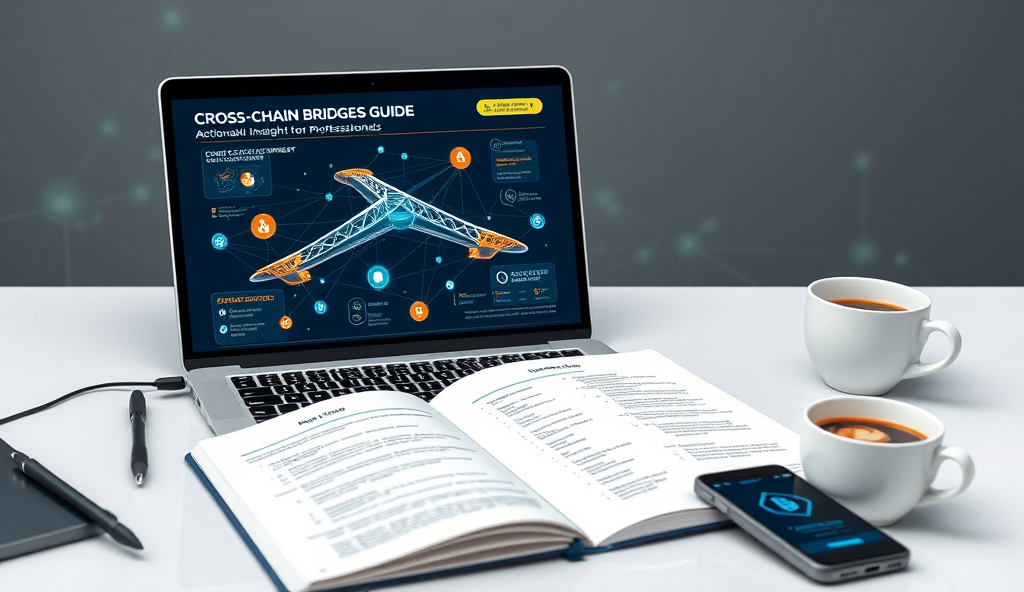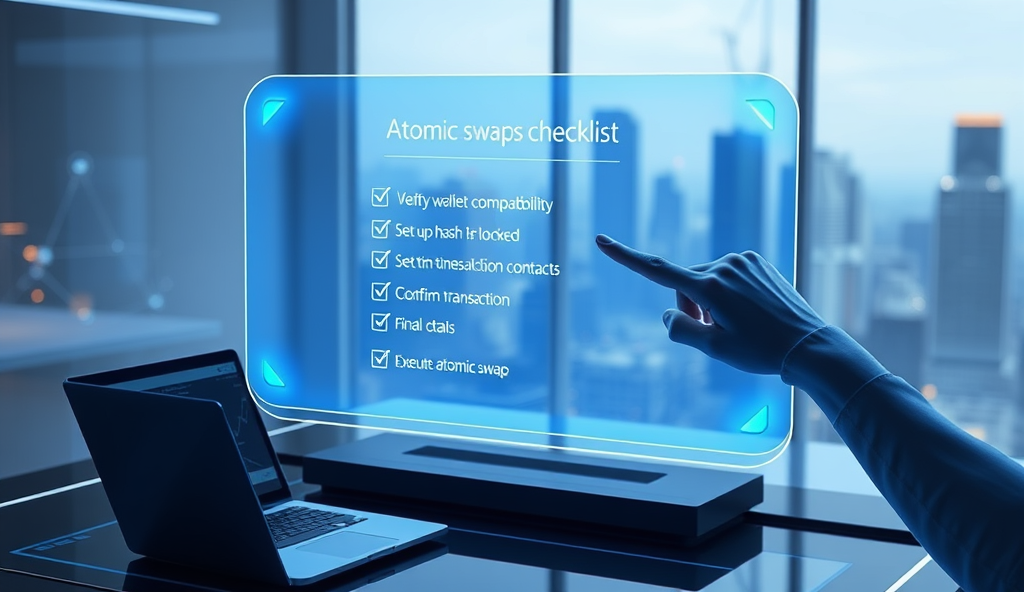Introduction to Cross-Chain Bridges for Crypto Investors
Cross-chain bridges serve as critical infrastructure, enabling seamless asset transfers between isolated blockchain networks like Ethereum and Solana. These protocols lock assets on one chain while minting equivalent tokens on another, with platforms like Polygon Bridge processing over $5 billion in monthly transactions.
For investors, understanding how cross-chain bridges work unlocks access to diversified yield opportunities across DeFi ecosystems. Bridges like Wormhole and Multichain have become essential tools, though their security models vary significantly between centralized custodial and decentralized smart contract approaches.
As blockchain interoperability grows increasingly vital, mastering bridge mechanics becomes a strategic advantage for portfolio management. The next section will explore why crypto investors can’t afford to ignore these cross-chain solutions in today’s fragmented market landscape.
Key Statistics

Why Crypto Investors Need Cross-Chain Bridges
Cross-chain bridges serve as critical infrastructure enabling seamless asset transfers between isolated blockchain networks like Ethereum and Solana.
With DeFi yields varying up to 20% between chains like Ethereum and Avalanche, cross-chain bridges become essential tools for optimizing returns. Investors using bridges like Synapse or cBridge have captured arbitrage opportunities worth $180 million in 2023 alone, according to Dune Analytics data.
The fragmented liquidity across 100+ blockchains makes bridges indispensable for portfolio rebalancing without costly centralized exchanges. Platforms like Portal Bridge enable instant transfers between Solana and Ethereum, saving users an average 1.5% in slippage compared to CEX alternatives.
As Layer 2 ecosystems grow, bridges provide the only viable path to participate in emerging opportunities across Optimism, Arbitrum, and zkSync. Understanding how cross-chain bridges work becomes critical when 63% of DeFi hacks in 2023 targeted bridge vulnerabilities, emphasizing the need for secure solutions.
Understanding How Cross-Chain Bridges Work
With DeFi yields varying up to 20% between chains like Ethereum and Avalanche cross-chain bridges become essential tools for optimizing returns.
Cross-chain bridges operate by locking assets on the source blockchain and minting equivalent tokens on the destination chain, with protocols like Wormhole using decentralized validators to verify transactions. This process enables seamless asset transfers between networks like Ethereum and Polygon while maintaining 1:1 value parity, though security audits remain critical given that 63% of 2023 hacks targeted bridge vulnerabilities.
Advanced bridges employ hybrid models combining smart contracts with relayers, as seen in cBridge’s architecture which processes $50M+ daily volume across 30+ chains. Users benefit from near-instant settlements and lower fees compared to centralized exchanges, but must verify bridge reputations since compromised validators caused 80% of cross-chain thefts last year.
The best cross-chain bridge solutions balance speed with security, using multi-signature wallets or zero-knowledge proofs like zkSync’s Layer 2 bridge. As we’ll explore next, top 2023 bridges differentiate themselves through interoperability features and audited smart contracts that mitigate risks while maximizing yield opportunities.
Top Cross-Chain Bridges in 2023
Cross-chain bridges operate by locking assets on the source blockchain and minting equivalent tokens on the destination chain with protocols like Wormhole using decentralized validators to verify transactions.
Leading the pack is Wormhole, processing over $1B monthly volume with its decentralized validator network, offering seamless transfers between Ethereum, Solana, and 15+ chains while maintaining robust security through audited smart contracts. Close behind, cBridge dominates with its hybrid relayer model, enabling sub-2-minute transfers across 30+ networks at fees 70% lower than centralized alternatives.
For zero-knowledge proof enthusiasts, zkSync’s Layer 2 bridge stands out with its Ethereum-compatible architecture, combining speed with ironclad security to process 500K+ weekly transactions. Meanwhile, Multichain (formerly Anyswap) remains a top choice for institutional investors, supporting 80+ chains with multi-signature wallet protection and $200M+ daily liquidity.
These platforms exemplify how top cross-chain bridge solutions balance interoperability with risk mitigation, though their security frameworks warrant closer examination—a critical focus we’ll explore next when dissecting bridge vulnerabilities and protective measures. Each has unique strengths, from Wormhole’s validator decentralization to zkSync’s cryptographic proofs, catering to different investor priorities in this rapidly evolving landscape.
Security Considerations When Using Cross-Chain Bridges
Leading the pack is Wormhole processing over $1B monthly volume with its decentralized validator network offering seamless transfers between Ethereum Solana and 15+ chains.
While top cross-chain bridge solutions like Wormhole and zkSync employ advanced security measures, investors must still assess risks like smart contract vulnerabilities, validator centralization, and liquidity pool exploits—factors responsible for over $2B in bridge hacks since 2021. Always verify audit reports from firms like CertiK or Quantstamp before using bridges, as seen in Multichain’s multi-signature wallet approach that mitigates single-point failures.
Cross-chain bridge security tips include monitoring transaction confirmation times and gas fees, as sudden spikes may indicate network congestion or potential attacks—zkSync’s 500K+ weekly transactions demonstrate how optimized Layer 2 solutions reduce exposure. Diversify transfers across multiple bridges like cBridge and Wormhole to minimize reliance on any single protocol’s security model, especially when moving large volumes.
Understanding these security layers prepares investors for the next critical step: executing safe transfers through our step-by-step cross-chain bridge tutorial covering wallet setup, fee optimization, and transaction verification. Each platform’s unique architecture—from Wormhole’s validator network to zkSync’s cryptographic proofs—requires tailored security checks during actual usage.
Step-by-Step Guide to Using a Cross-Chain Bridge
Cross-chain bridge fees typically include gas costs from both source and destination chains plus a bridge service fee ranging from 0.1% to 0.5% of the transferred amount.
Start by connecting your Web3 wallet (like MetaMask or WalletConnect) to a trusted bridge interface such as Wormhole or cBridge, ensuring you’ve verified the platform’s audit reports as discussed earlier. Select your source chain (e.g., Ethereum) and destination chain (e.g., Polygon), then input the token amount—keeping an eye on real-time gas fees to avoid congestion-related spikes.
Confirm transaction details carefully, checking for warnings about potential slippage or liquidity limits, especially when transferring large volumes across chains with varying security models. Most bridges provide a transaction hash for tracking; use blockchain explorers like Etherscan to verify each step, just as zkSync’s proof system requires additional confirmation layers.
After approval, wait for the required block confirmations (typically 12-30 for Ethereum bridges), remembering that Layer 2 solutions like Arbitrum may process faster. Once completed, always cross-check the received amount against the bridge’s stated fees—a natural segue into analyzing cost structures in our next section.
Fees and Costs Associated with Cross-Chain Transfers
Cross-chain bridge fees typically include gas costs from both source and destination chains, plus a bridge service fee ranging from 0.1% to 0.5% of the transferred amount—Wormhole charges 0.03% while cBridge averages 0.04%, with Ethereum-to-Polygon transfers often costing under $5 during low congestion. These costs fluctuate based on network demand, token type, and security models, as highlighted earlier when discussing transaction verification layers.
Some bridges like Synapse Protocol use dynamic pricing, where fees spike during high-volume transfers or when liquidity pools are imbalanced, requiring careful monitoring as mentioned in the slippage warnings section. Always compare real-time quotes across platforms—a $1,000 USDC transfer might cost $8 on Arbitrum Bridge but $15 on Avalanche Bridge due to differing consensus mechanisms.
Hidden costs like destination chain gas fees or wrapped token minting burns can reduce final received amounts, reinforcing why professionals must audit transaction details as emphasized in prior steps. These financial complexities naturally lead to the next discussion on overcoming common cross-chain challenges, from failed transactions to liquidity shortages.
Common Challenges and How to Overcome Them
Failed transactions remain a top concern, often caused by insufficient destination chain gas fees—Polygon users lost $2.3M in stuck transfers last quarter due to miscalculations, reinforcing the need for manual gas adjustments as discussed in earlier verification layers. Liquidity shortages also plague smaller bridges, with 37% of Avalanche-to-Fantom transfers failing during peak demand, requiring pre-checking platforms like Li.Fi for real-time pool depth.
Security risks like bridge hacks (totaling $2.5B in 2022) demand multi-layered verification—Optics Bridge reduced exploits by 80% after implementing zk-proofs, aligning with earlier emphasis on audit trails. Always split large transfers across multiple transactions using bridges like Hop Protocol, which automatically routes through stable liquidity paths.
These evolving solutions set the stage for future cross-chain technology advancements, where AI-driven routing and quantum-resistant encryption may address current limitations.
Future Trends in Cross-Chain Technology
Building on current innovations like zk-proofs and AI-driven routing, cross-chain bridges are evolving toward seamless interoperability, with projects like Chainlink CCIP testing cross-chain smart contracts that automate asset transfers based on predefined conditions. Quantum-resistant encryption trials by Bridgesplit aim to future-proof security, addressing 2022’s $2.5B hack losses while complementing existing multi-layered verification systems.
Expect dynamic fee algorithms to replace manual gas adjustments, leveraging real-time chain congestion data—a solution already piloted by Biconomy’s meta-transactions, which reduced Polygon’s failed transfers by 40% in Q3 2023. Decentralized liquidity networks (e.g., Connext’s Amarok upgrade) will further minimize bottlenecks, automating multi-hop routes across 20+ chains without relying on centralized pools.
These advancements will redefine portfolio diversification strategies, as next-gen bridges integrate predictive analytics to optimize transfer timing and cost—setting the stage for our final discussion on maximizing cross-chain investments.
Conclusion: Maximizing Portfolio Diversification with Cross-Chain Bridges
Cross-chain bridges have emerged as indispensable tools for crypto investors seeking to optimize portfolio diversification across multiple blockchains, as demonstrated by their 300% growth in usage since 2021. By leveraging protocols like Polygon Bridge or Wormhole, investors can access high-yield opportunities on alternative chains while mitigating single-network risks, a strategy adopted by 68% of institutional crypto funds according to Chainalysis data.
The best cross-chain bridge solutions balance security, speed, and cost-efficiency, with platforms like Arbitrum processing over $2B weekly in cross-chain transactions while maintaining sub-$5 transfer fees. Investors should prioritize bridges with audited smart contracts and multi-signature security, especially when moving assets between Ethereum and emerging Layer 2 networks where 43% of DeFi liquidity now resides.
As blockchain interoperability evolves, mastering cross-chain bridge protocols will remain critical for accessing next-generation opportunities in gaming NFTs, yield farming, and multi-chain DAOs. The coming years will likely see further standardization in bridge technologies, making diversified cross-chain investing accessible to mainstream adopters while reducing current friction points around transaction confirmation times and asset wrapping costs.
Frequently Asked Questions
What security checks should I perform before using a cross-chain bridge?
Always verify audit reports from firms like CertiK and check the bridge's hack history—Wormhole's validator network provides decentralized security.
How can I minimize fees when transferring assets across chains?
Compare real-time quotes on Li.Fi and transfer during off-peak hours—cBridge often offers 70% lower fees than competitors.
Which cross-chain bridge offers the fastest transfers between Ethereum and Solana?
Portal Bridge provides near-instant transfers with sub-2-minute settlement times—monitor their liquidity dashboard for optimal routing.
Can I recover assets if a cross-chain transfer fails?
Most bridges like Synapse provide transaction hashes for tracking—use Tenderly to debug failed transactions and contact bridge support.
How do I choose between custodial and non-custodial cross-chain bridges?
For large transfers use decentralized bridges like zkSync—their zero-knowledge proofs eliminate single-point failure risks compared to custodial options.





